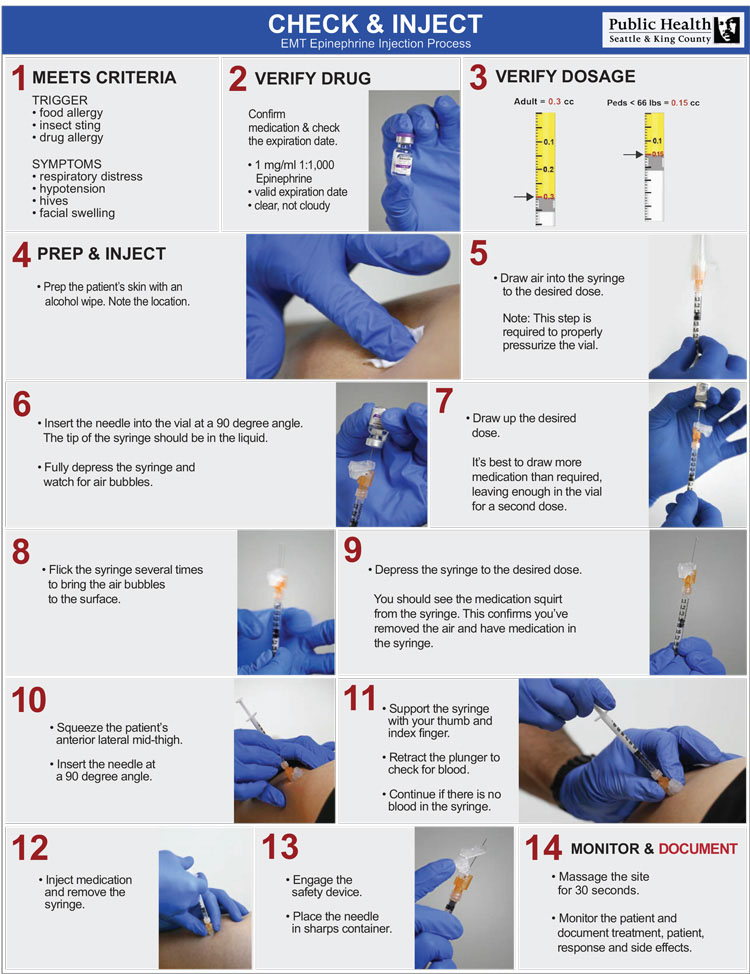Ever wonder how much the auto-injector device contributes to the cost of emergency epinephrine for use in an anaphylactic emergency? Officials at King County, Washington know.
In 1999, Washington state passed the Christine Castner Act mandating that all emergency medical technicians (EMTs) be trained and equipped to administer epinephrine. At the time, the county turned to the standard delivery mechanism: the auto-injector.
Responding to the rising costs of epinephrine auto-injectors in 2009, the state passed legislation allowing counties to decide whether to train and supply EMTs to administer epinephrine by intramuscular injection via traditional syringe.
In 2014, King County initiated a program called “Check and Inject” for just this purpose. By July of that year, all county EMS agencies were participating and supplied kits that included a vial of epinephrine, 2 syringes, bandages and alcohol wipes.

This year, there are 565 EMS vehicles that each require a supply of two epinephrine doses, totaling 1130 doses. Based on current pricing, the county compared the cost of purchasing auto-injectors vs the cost of “Check and Inject”:
| Auto-Injector | “Check and Inject” | |
|---|---|---|
| Cost of Kit | $600 per two-pack (two-year expiration) |
$18 (two-year expiration) |
| Annual Cost | $339,000 | $5,085 |
The cost breakdown doesn’t account for usage and breakage which would result in an even larger cost disparity. The breakdown also assumes auto-injectors expire in 2 years when in fact the county experienced an average of 18 month expiration upon purchase. Had this been factored in, the cost savings would have been $100,000 higher.
The analysis shows the cost for equipping EMS personnel with life-saving epinephrine can be drastically reduced when the appropriate legislation is in place and EMTs are provided with adequate training in drawing and administering the drug.
We at SnackSafely.com believe that all emergency responders should be trained and equipped to administer epinephrine in case of anaphylaxis. Should measures similar to “Check and Inject” prove to be as effective in emergency treatment as administration via auto-injector, we encourage other jurisdictions to follow suit.
Does your locality train and equipment emergency personnel with epinephrine? If not, share this article with your county administrator.





